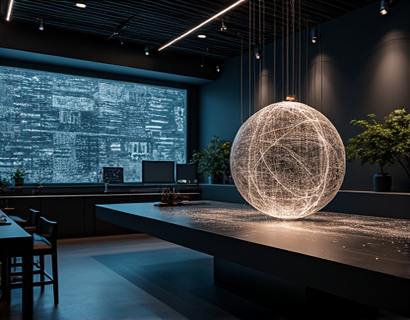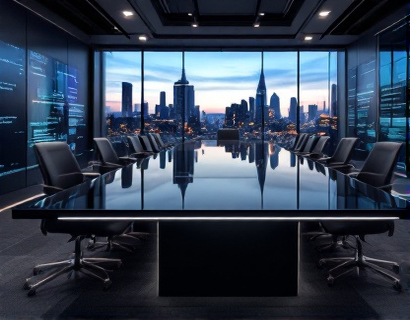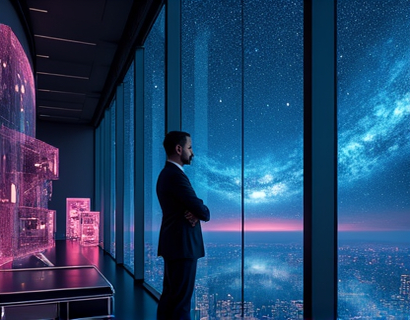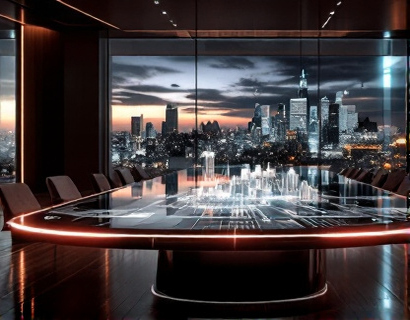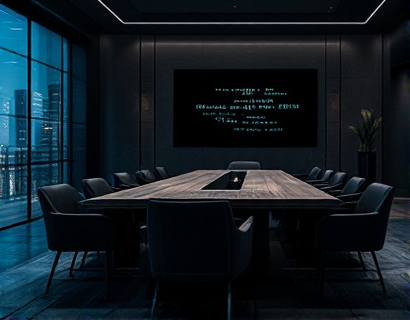Embracing the Future: How Augmented Reality is Transforming E-Commerce and Lifestyle Enhancement
In the rapidly evolving landscape of technology, augmented reality (AR) has emerged as a pivotal force, reshaping various industries including e-commerce. This innovative technology overlays digital information onto the physical world, creating immersive and interactive experiences. For tech-savvy consumers seeking to enhance their lifestyle, AR-driven e-commerce platforms offer a revolutionary approach to shopping, blending the virtual and real worlds to create a seamless and engaging experience.
The integration of AR in e-commerce is not just a novelty; it represents a significant leap forward in how we interact with products and services online. Traditional e-commerce platforms often struggle to bridge the gap between online browsing and physical store experiences, leading to a disconnect that can frustrate consumers. AR technology addresses this issue by allowing users to visualize products in their own environment before making a purchase, thereby reducing uncertainty and enhancing decision-making.
Enhancing Product Visualization
One of the most immediate benefits of AR in e-commerce is the enhancement of product visualization. Gone are the days of relying solely on static images or videos to understand a product's features and design. With AR, consumers can see how furniture would look in their living room, how clothing would fit without trying it on, or how makeup would appear on their skin. This level of interactivity not only improves the shopping experience but also increases customer confidence in their purchasing decisions.
For instance, a furniture retailer could offer an AR app that lets users place virtual furniture in their home. By using their smartphone or tablet camera, customers can see exactly how a sofa or coffee table would fit in their space, taking into account dimensions, colors, and styles. This feature not only makes the shopping process more enjoyable but also reduces the likelihood of returns due to size or style mismatches.
Personalized Shopping Experiences
AR technology also enables personalized shopping experiences tailored to individual preferences and needs. By leveraging data from user interactions, AR applications can offer recommendations based on past purchases, browsing history, and even real-time feedback. This personalization goes beyond simple product suggestions, creating a more intimate and relevant shopping journey.
Imagine an AR-powered beauty platform that uses facial recognition to suggest makeup products based on your skin type, tone, and the specific look you're aiming for. The app could simulate how different shades and styles would look on your face, allowing you to experiment with various looks without the need for physical samples. This level of personalization not only enhances the shopping experience but also fosters a deeper connection between the consumer and the brand.
Interactive Product Demonstrations
Another significant advantage of AR in e-commerce is the ability to provide interactive product demonstrations. For complex or high-tech products, understanding their features and benefits can be challenging through traditional media. AR allows brands to create immersive demonstrations that guide users through the product's functionalities, making the learning process engaging and straightforward.
For example, a tech company launching a new smartwatch could use AR to show how the device tracks fitness goals, receives notifications, and integrates with other smart devices. Users can point their device's camera at a virtual display to see step-by-step tutorials and interactive features, all within their own environment. This hands-on approach not only educates consumers but also builds trust and loyalty towards the brand.
Increasing Customer Engagement
AR-driven e-commerce platforms are not just about improving individual transactions; they are also designed to increase overall customer engagement. By offering interactive and memorable experiences, these platforms encourage users to spend more time exploring products and services. This increased engagement translates into higher customer retention rates and a stronger brand presence in the market.
Brands can create AR-based games, challenges, and interactive stories that keep users coming back for more. For instance, a fashion retailer could launch an AR scavenger hunt where users find virtual clothing items hidden around a virtual city. Each item found could unlock exclusive discounts or early access to new collections, incentivizing users to explore the platform thoroughly.
Building Trust Through Transparency
Trust is a critical factor in e-commerce, and AR technology helps build this trust by providing transparency and authenticity. By allowing customers to see products in action, AR reduces the uncertainty associated with online shopping. This transparency extends to product information, where AR can overlay detailed specs, reviews, and user-generated content directly onto the product image.
For instance, a home decor brand could use AR to display detailed material information, care instructions, and customer reviews when a user points their device at a virtual piece of furniture. This level of detail not only informs the consumer but also demonstrates the brand's commitment to honesty and customer satisfaction.
Enhancing the Shopping Journey
The integration of AR into the shopping journey begins long before the purchase decision. From the moment a user opens the AR app, the experience is designed to be intuitive and enjoyable. The interface is often gamified, with interactive elements that make browsing a delightful experience. This approach not only keeps users engaged but also encourages them to explore more products and services.
Moreover, AR can streamline the shopping process by reducing the need for multiple pages or tabs. A user can start by browsing products, select an item to see it in AR, and then proceed directly to purchase with just a few taps. This seamless flow not only saves time but also enhances the overall user experience, making the platform more appealing to tech-savvy consumers.
Supporting Sustainable Practices
In an era where sustainability is increasingly important, AR-driven e-commerce platforms can play a role in promoting eco-friendly practices. By reducing the need for physical samples and prototypes, AR minimizes waste and resource consumption. Additionally, the ability to visualize products in their actual size and context can reduce the likelihood of returns, further lowering the environmental impact of shipping and handling.
Brands can also use AR to highlight their sustainability efforts, such as showcasing the eco-friendly materials used in products or the sustainable manufacturing processes. This transparency not only appeals to environmentally conscious consumers but also reinforces the brand's commitment to responsible practices.
Future Trends and Innovations
As AR technology continues to advance, we can expect even more innovative applications in e-commerce. One potential development is the integration of AR with artificial intelligence (AI) to create hyper-personalized shopping experiences. AI algorithms can analyze user behavior and preferences in real-time, offering highly customized product recommendations and interactive experiences tailored to each individual.
Another exciting trend is the use of AR in virtual try-on for a broader range of products, including accessories, eyewear, and even virtual reality (VR) experiences. As devices become more sophisticated, the line between the physical and digital worlds will continue to blur, offering consumers unprecedented levels of convenience and immersion.
Conclusion
The integration of augmented reality in e-commerce represents a significant shift in how we shop and interact with products online. By providing enhanced visualization, personalized experiences, interactive demonstrations, and increased engagement, AR-driven platforms are redefining the retail landscape. For tech-savvy consumers seeking a modern and satisfying shopping journey, AR offers a glimpse into the future of lifestyle enhancement. As the technology evolves, the potential for innovation and improvement is vast, promising a more connected, enjoyable, and sustainable shopping experience for all.
























